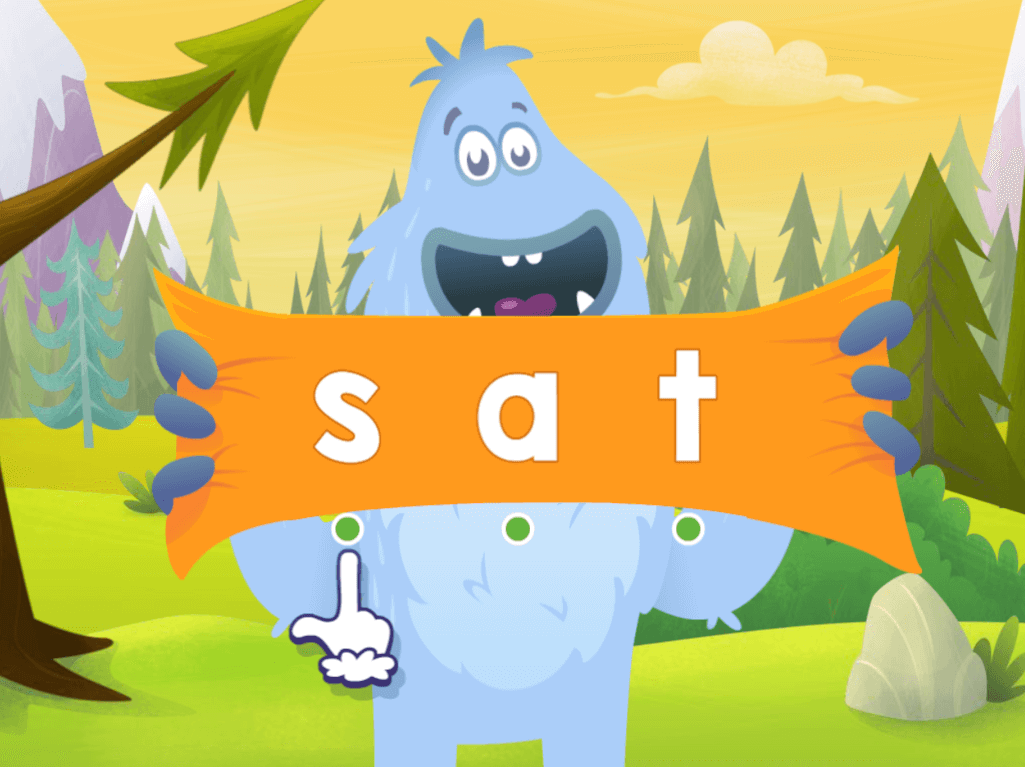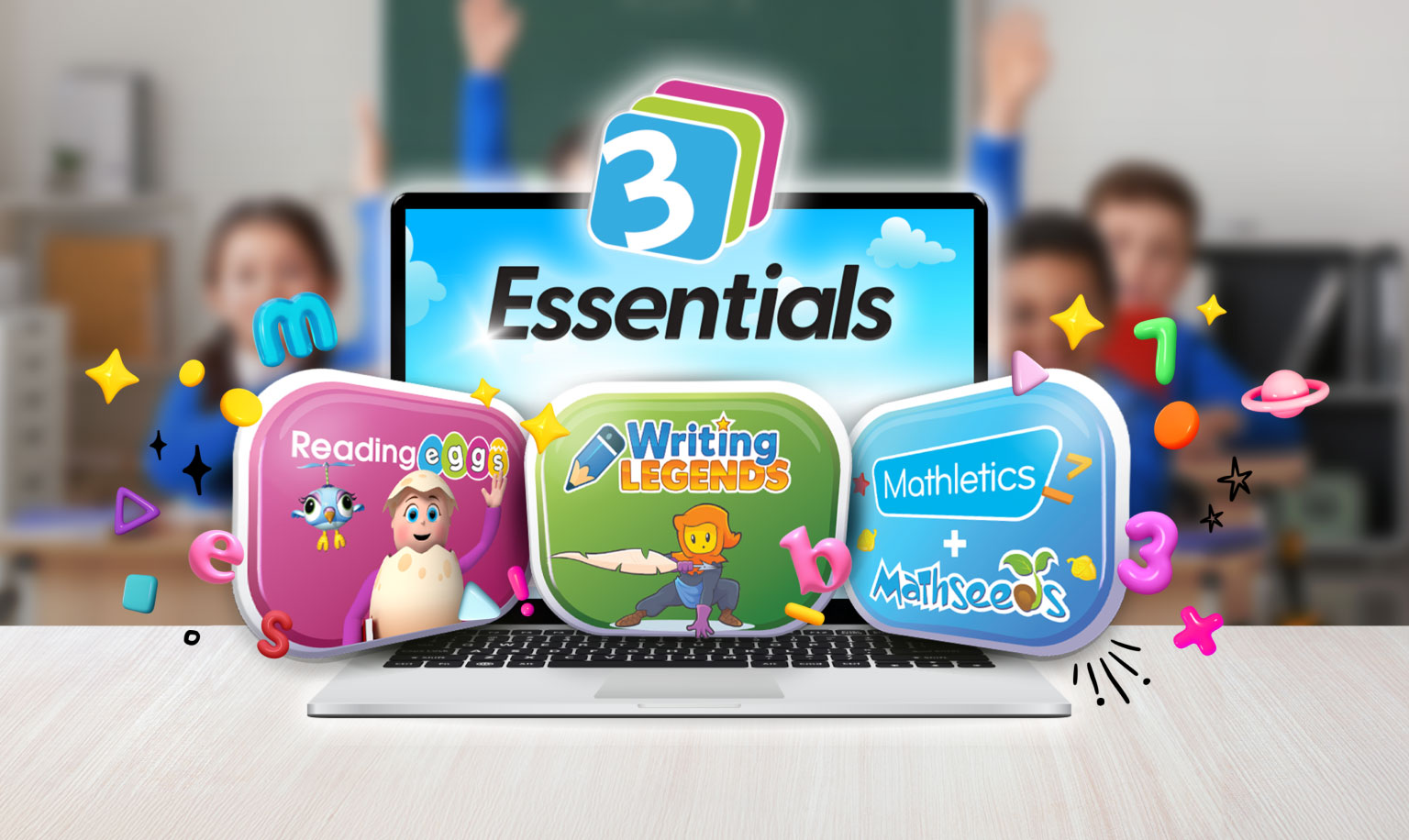
When it comes to teaching phonics, there is no one-size-fits-all approach.
If you’re reading this, you’ve probably heard of the term systematic synthetic phonics. Curious about how it works?
Here’s all you need to know about this evidence-based approach.
What is systematic synthetic phonics?
In a nutshell, systematic synthetic phonics is a sequential approach to learning to read.
It teaches students how to identify letters (graphemes) and their associated sounds (phonemes). As the word ‘systematic’ suggests, it follows a structured and direct way of educating learners how to read, by breaking the word down into the smallest units of sound.
The ‘synthetic’ part comes from the process of synthesising/synthesizing – blending sounds to create new words.

How did it come about?
In the 1990s, whole-word and whole-language approaches dominated the scene and synthetic phonics was not widely used yet.
Then came the Clackmannanshire report in 2005, a seven-year study by The Scottish Executive into the effectiveness of a synthetic phonics program in teaching reading and spelling.
The results proved that the synthetic phonics approach is more effective than the analytic phonics approach, and was instrumental in shaping the UK government’s advice on the use of systematic phonics.
Why is it seen as effective?
Ever fumble to spell words even as an adult?
English is a complex language with so many ways to make the same sounds from different letters. This can be confusing and difficult to learn, especially for young readers.
Systematic synthetic phonics equips young learners with strategies to code and decode words. This allows them to form new words by working from sound alone, without having to rely on images or context.
A systematic synthetic phonics approach works best with the following key elements:
- Sequential (progress from simple to complex letters and sounds)
- Explicit instructions on how to blend
- Spelling is taught alongside reading
- Decodable books/readers are used to reinforce reading skills
So what does a systematic synthetic phonics lesson looks like?
Students first learn new phonemes quickly and in a set order, with the most common phonemes learned first.
As they learn each new phoneme, they revisit previously learned phonemes and blend them to read words. For example, you can start off with common phonemes such as /s/, /a/, /t/, /p/ so students can start blending and read words like ‘sat’, ‘at’, ‘tap’, ‘sap’, ‘taps’ and ‘pat’.
New phonemes such as /m/, /d/, /i/ and /n/ can be introduced in the following week. Having the knowledge of these eight phonemes, students can blend and read over 20 words and progress to decodable books or readers.

Once all the common phonemes have been mastered, you can start including more complex sounds like /sh/, /ch/ (digraphs) and /igh/ (trigraphs).
In Fast Phonics, an online systematic synthetic phonics program, students are first placed on a sequenced learning map according to their level and ability. They then work their way through 20 fun-filled levels known as Peaks.
Each Peak builds on specific letters and sounds, with step-by-step instructions on how to blend them. To extend their reading, blending and spelling skills, you’ll also find built-in assessments, engaging spelling games and over 350 decodable books.

Glossary of key terms
To help you have a better understanding, here’s a list of common terminologies you might find in a systematic synthetic phonics program.
- Phoneme
The smallest unit of speech sound in a word - Grapheme
The written letter or group of letters that represent a speech sound - Digraph
A combination of two letters representing one sound, for example /ph/. - Trigraph
A combination of three letters representing one sound, for example /igh/. - Grapheme-phoneme Correspondence (GPC)
Process of matching both the grapheme and phonemes together and vice versa - Segmenting
Breaking up spoken words into their separate sounds - Blending
Combining broken up sounds to make a word - Consonant-vowel-consonant (CVC) words
Words that can be read by blending the individual phoneme sounds together, where the vowel sound is always short. For example, cat, rug, and pen. - Decoding
The process of reading a word by identifying which sound (phoneme) corresponds with each letter (grapheme) and then blending these individual sounds or letters to make words. - Sound mats
A printed collection of sounds used in phonics, accompanied by a related image - Nonwords
A group of letters or speech sounds that looks or sounds like a word but doesn’t have a meaning to it - Pseudo-words
A type of nonword that is made up of a combination of phonemes, but has no specific meaning - Tricky words
Words that cannot be sounded out easily
- High-frequency words
Words that appear most often in our language - Decodable books/readers
A book for beginning readers containing words they can sound out using letters and sounds, designed to align with an explicit and systematic phonics instruction
Where is it being used?
In the UK, there has been a shift from an analytic approach to a systematic synthetic phonics approach.
Since the introduction of the phonics screening check in 2012, the UK Department for Education has revised core criteria for effective systematic synthetic phonics teaching programmes and launched a new process to validate complete systematic synthetic phonics teaching programmes.
Over in Australia, the latest curriculum review calls for a stronger focus on phonics.
One of the focus is to build early readers’ phonic knowledge by using books that encourage learners to read out words by blending letters with sounds. South Australia led the first trial of Year 1 phonics check in 2017, followed by New South Wales in 2020. A year after, the phonics check was made mandatory in New South Wales for all Year 1 public schools.
Both trials demonstrated the feasibility of providing diagnostic assessments and provided useful insights into students’ decoding abilities.
An Online Systematic Synthetic Phonics Program
Want your students to ace their phonics check? Or looking to boost your class reading skills?
Fast Phonics makes a great classroom resource to complement your in-class teaching. Designed for emergent and early K–2 readers and brimming with 400 fun phonics activities for students, teachers also get an extensive range of resources such as detailed weekly teaching planners and more!











